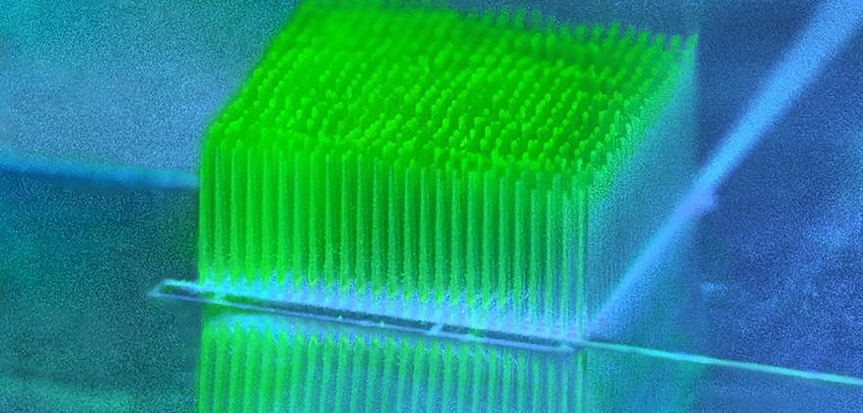
Researchers from the University of Cambridge have built what they describe as grids of high-rise ‘nano-housing’ where cyanobacteria can flourish. Project leader Dr Jenny Zhang from the Yusuf Hamied Department of Chemistry said, “There’s been a bottleneck in terms of how much energy you can actually extract from photosynthetic systems, but no one understood where the bottleneck was. Most scientists assumed that the bottleneck was on the biological side, in the bacteria, but we’ve found that a substantial bottleneck is actually on the material side.”
The team 3D-printed custom electrodes out of metal oxide nanoparticles that are designed to work with the bacteria as they perform photosynthesis. The electrodes were printed as highly branched, densely packed pillar structures, almost like a minute city. They developed a printing technique that allows control over multiple length scales, making the structures customisable.
“The electrodes have excellent light-handling properties, like a high-rise apartment with lots of windows,” said Zhang. “Cyanobacteria need something they can attach to and form a community with their neighbours. Our electrodes allow for a balance between lots of surface area and lots of light – like a glass skyscraper.”
Once the self-assembling cyanobacteria were in their new home, the researchers found that they were more efficient than other current bioenergy technologies, such as biofuels. The technique drastically increased the amount of energy extracted over other methods for producing bioenergy from photosynthesis.
Zhang added, “I was surprised we were able to achieve the numbers we did – similar numbers have been predicted for many years, but this is the first time that these numbers have been shown experimentally. Cyanobacteria are versatile chemical factories. Our approach allows us to tap into their energy conversion pathway at an early point, which helps us understand how they carry out energy conversion so we can use their natural pathways for renewable fuel or chemical generation.”
















